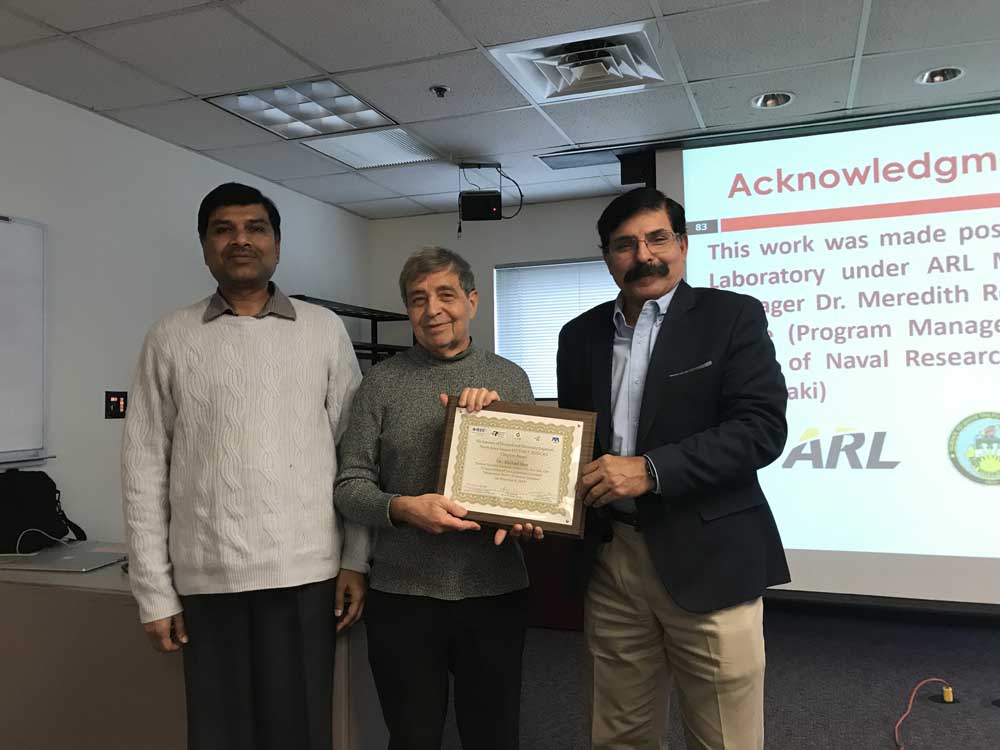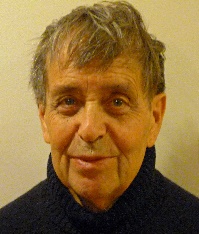Nanoplasmonic TeraFETs for Terahertz Applications

Recent developments in nanoplasmonics have promise of bridging the famous terahertz
(THz) gap and enabling numerous applications of THz technology ranging from remote sensing to the detection of chemical agents, radio astronomy, non-destructive VLSI testing, concealed weapons and object detection, gasoline and oil quality testing, spectroscopy of explosives and drugs, THz communications, imaging, biotechnology, medical diagnostics, and cancer detection.
Date and Time
Location
Hosts
Registration
-
 Add Event to Calendar
Add Event to Calendar
- 154 Summit Street, Newark, NJ 07102
- Newark, New Jersey
- United States 07102
- Building: ECEC
- Room Number: 202
- Click here for Map
- Contact Event Host
-
Ajay K. Poddar, Ph.: 201-560-3806, email:akpoddar@ieee.org
Durga Misra, +1-973-596-5739, email: dmisra@ieee.org
Edip Niver, email: edip.niver@njit.edu
Anisha Apte, email: anisha_apte@ieee.org
- Co-sponsored by AP/MTT17, ED/CAS
Speakers
 Prof. Michael Shur of Rensselaer Polytechnic Institute, Troy, New York, USA
Prof. Michael Shur of Rensselaer Polytechnic Institute, Troy, New York, USA
Nanoplasmonic TeraFETs for Terahertz Applications
Recent developments in nanoplasmonics have promise of bridging the famous terahertz
(THz) gap and enabling numerous applications of THz technology ranging from remote sensing to the detection of chemical agents, radio astronomy, non-destructive VLSI testing, concealed weapons and object detection, gasoline and oil quality testing, spectroscopy of explosives and drugs, THz communications, imaging, biotechnology, medical diagnostics, and cancer detection. The nonlinearity of the electron transport in ultra-short field effect transistor structures (TeraFETs) enables rectification, frequency multiplication, and excitation of the electron density oscillations (called plasma waves) with the commensurate detection, manipulation, or emission of sub-THz or THz radiation. Novel device designs using variable width plasmonic field effect nanostructures support the plasmonic instabilities in the electronic fluid in the TeraFET channels and the new plasmonic regimes of operation for the THz emission, detection, communications, spectroscopy and interferometry. A comparative analysis of the electronic fluid plasmonic properties shows that Si, GaN, InGaAs, and diamond TeraFET THz systems could operate at room temperature and above.
Biography:
Dr. Michael Shur received the M.S. degree in electrical engineering from the St. Petersburg Electrotechnical University, the Ph.D. degree in mathematics and physics and D.Sc. degree (habilitation) in mathematics and physics from the A.F. Ioffe Institute of Physics and Technology. He is currently the Patricia W. and C. Sheldon Roberts Professor of Solid State Electronics at Rensselaer Polytechnic Institute in Troy, NY. Dr. Shur is a Life Fellow of the IEEE, the American Physical Society, SPIE, and Fellow of OSA, SPIE, IET, AAAS, MRS, WIF, and ECS. He is also Editor-In-Chief of the International Journal of High-Speed Electronics and Systems. His awards include the Tibbetts Award for Technology Commercialization, Honorary Doctorates from the St. Petersburg Technical University and University of Vilnius, IEEE EDS Ebers Award, Sensors Council Technical Achievement Award, IEEE Donald Fink Award, IEEE Kirchmayer Award, Gold Medal of the Russian Ministry of Education, van der Ziel Award, Senior Humboldt Research Award, Pioneer Award, RPI Engineering Research Award, several Best Paper Awards, and Distinguished Lecturer awards from the IEEE EDS, MTT, and Sensors Council. He is Foreign Member of Lithuanian Academy of Sciences and a Fellow of the National Academy of Inventors.
Address:Rensselaer Polytechnic Institute, , Troy, New York, United States
Agenda
10:30 AM - 10:45 AM Coffee Break
11:30 AM - 12:15 PM: Nanoplasmonic TeraFETs for Terahertz Applications by Prof. Michael Shur, RPI, USA
12:15 PM - 01:30 PM: Lunch
You do not have to be an IEEE Member to attend. Refreshmen is free for all attendess. Please invite your friends and colleagues to take advantages of this Invited series of Distinguished Lectures. You need to register.
Co-sponsor by MTT/AP & ED/CAS Chapters
